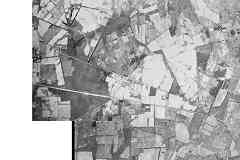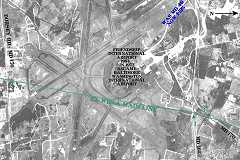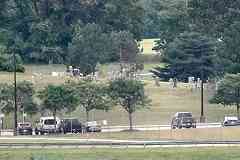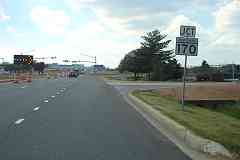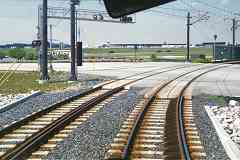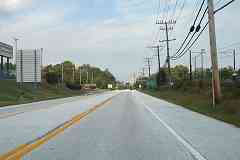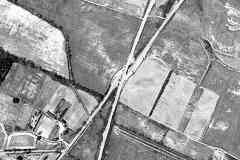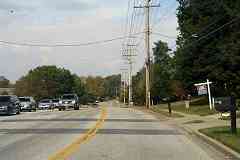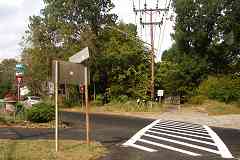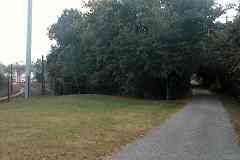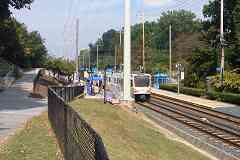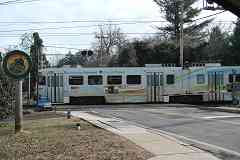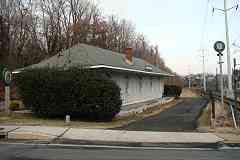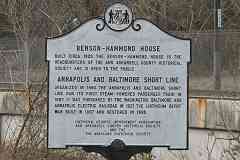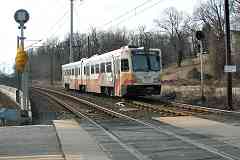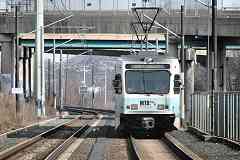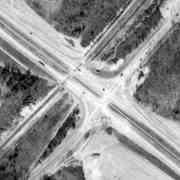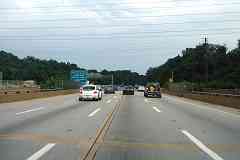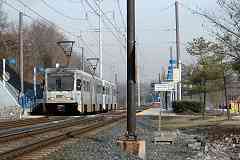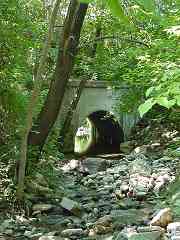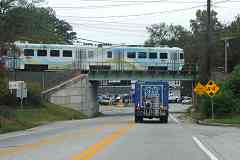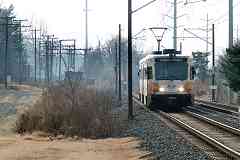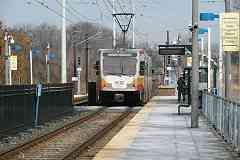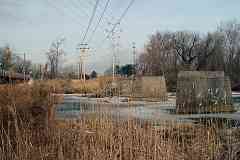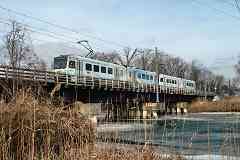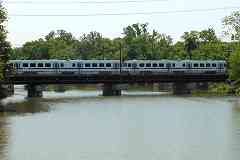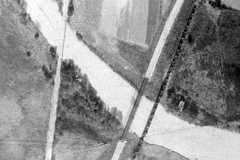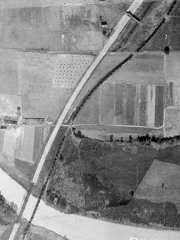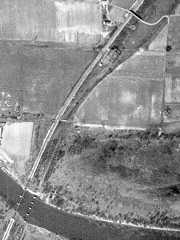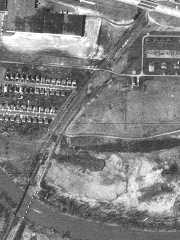|
When new during 1953, the first section of Baltimore's Beltway met B&A (ex WB&A)
tracks at grade with, according to readers, gates and signal lights. That's the
nascent Beltway running upper-left to lower-right, intersecting on the left is
B&A running on the WB&A alignment, and on the right is MD 170, Camp Meade
Road. ASL does not appear because B&A had erased it prior to 1953.
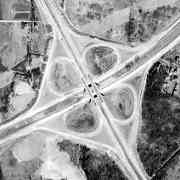 The less-than-two-mile stretch of Beltway connected Nursery Road with
Baltimore-Annapolis Boulevard, and between met the B-W Parkway at a
then-uncommon full-cloverleaf interchange (left).
The B-W Parkway's second cloverleaf opened later at MD 175. The area's
first full cloverleaf interchange appears to he that for MD 150 and MD 151,
one Wikipedia information dates to circa 1943.
The less-than-two-mile stretch of Beltway connected Nursery Road with
Baltimore-Annapolis Boulevard, and between met the B-W Parkway at a
then-uncommon full-cloverleaf interchange (left).
The B-W Parkway's second cloverleaf opened later at MD 175. The area's
first full cloverleaf interchange appears to he that for MD 150 and MD 151,
one Wikipedia information dates to circa 1943.
I count three vehicles. Now there are a wee bit more at most hours. The
cloverleaf interchange was patented by Marylander Arthur Hall in 1916;
New Jersey built the first one in the US about 1930.
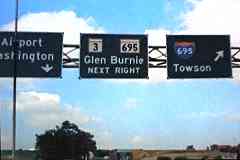 Those 1950s Beltway bridges were still on duty during 1975 when the
Movin' On
episode "From Baltimore to Eternity" was filmed on location. In this screen shot
(fair use) the camera is looking southwest on the B-W Parkway, approaching the
Beltway (distance). The Baltimore Beltway had not yet been completed
full-circle in 1975 and the section from here east was not up to Interstate Highway
standards, hence the rectangular Maryland 695 sign. Even though the road has
since been upgraded, it officially remains Maryland 695 despite the I-695 shields
posted.
Those 1950s Beltway bridges were still on duty during 1975 when the
Movin' On
episode "From Baltimore to Eternity" was filmed on location. In this screen shot
(fair use) the camera is looking southwest on the B-W Parkway, approaching the
Beltway (distance). The Baltimore Beltway had not yet been completed
full-circle in 1975 and the section from here east was not up to Interstate Highway
standards, hence the rectangular Maryland 695 sign. Even though the road has
since been upgraded, it officially remains Maryland 695 despite the I-695 shields
posted.
| 